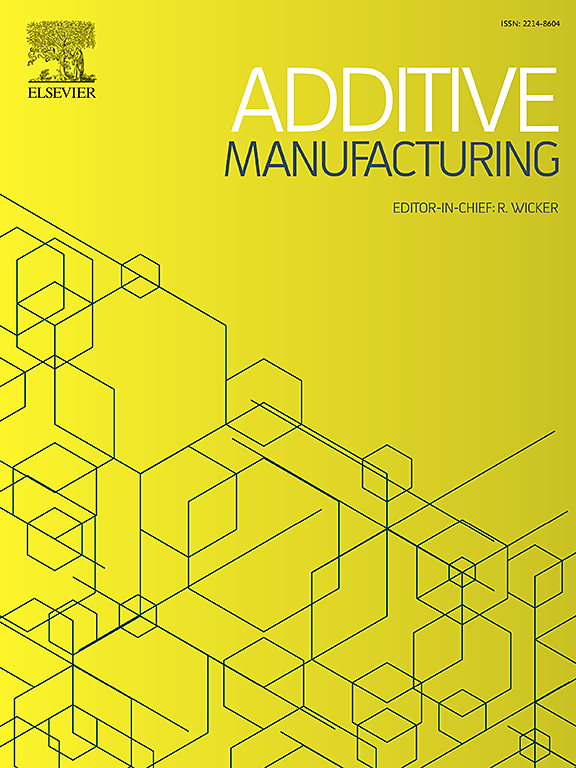Scalable path planning and reduced order modeling for temperature optimization in Direct Energy Deposition
IF 11.1
1区 工程技术
Q1 ENGINEERING, MANUFACTURING
引用次数: 0
Abstract
Direct energy deposition (DED) processes, including laser DED and wire-arc additive manufacturing, provide high throughput and geometric flexibility, yet dimensional inaccuracies and heterogeneous properties frequently arise when sub-optimal tool paths create uneven temperature fields. Thermally aware path optimization is therefore essential but remains computationally prohibitive for complex geometries, forming the principal bottleneck in current algorithms. This study introduces an efficient planning framework that constructs a reduced order thermal model with GPyro, a machine-learning subspace technique that predicts temperature profiles only on the deposition layer. This allows swift layer-wise reductions, thereby extending the applicability of reduced-order models to arbitrary three-dimensional geometries. Additionally, the algorithm leverages the fast Fourier transform to evaluate temperature evolution efficiently, significantly reducing computational time while preserving accuracy. Compared to existing methods, the proposed approach achieves up to a 10-fold reduction in pre-computing time and a 10-fold acceleration in evaluating process temperature fields. Experimental validation on components with high overhang angles confirms the effectiveness of the algorithm, consistently producing high-quality, defect-free parts and demonstrating that coupling GPyro with iterative optimizers enables the optimization of deposition strategies, even for complex geometries.

直接能量沉积中温度优化的可扩展路径规划和降阶建模
直接能量沉积(DED)工艺,包括激光DED和线弧增材制造,提供了高吞吐量和几何灵活性,但当次优刀具路径产生不均匀的温度场时,经常出现尺寸不准确和不均匀性。因此,热感知路径优化是必要的,但对于复杂的几何形状,计算仍然是禁止的,形成当前算法的主要瓶颈。本研究引入了一个有效的规划框架,该框架使用GPyro构建了一个降阶热模型,GPyro是一种机器学习子空间技术,只能预测沉积层的温度分布。这允许快速分层化简,从而将降阶模型的适用性扩展到任意三维几何形状。此外,该算法利用快速傅里叶变换有效地评估温度演变,在保持准确性的同时显着减少了计算时间。与现有方法相比,该方法在预计算时间上减少了109倍,在评估过程温度场时加速了102倍。在高悬垂角组件上的实验验证证实了该算法的有效性,始终如一地生产出高质量、无缺陷的部件,并证明GPyro与迭代优化器的耦合可以优化沉积策略,即使是复杂的几何形状。
本文章由计算机程序翻译,如有差异,请以英文原文为准。
求助全文
约1分钟内获得全文
求助全文
来源期刊

Additive manufacturing
Materials Science-General Materials Science
CiteScore
19.80
自引率
12.70%
发文量
648
审稿时长
35 days
期刊介绍:
Additive Manufacturing stands as a peer-reviewed journal dedicated to delivering high-quality research papers and reviews in the field of additive manufacturing, serving both academia and industry leaders. The journal's objective is to recognize the innovative essence of additive manufacturing and its diverse applications, providing a comprehensive overview of current developments and future prospects.
The transformative potential of additive manufacturing technologies in product design and manufacturing is poised to disrupt traditional approaches. In response to this paradigm shift, a distinctive and comprehensive publication outlet was essential. Additive Manufacturing fulfills this need, offering a platform for engineers, materials scientists, and practitioners across academia and various industries to document and share innovations in these evolving technologies.
 求助内容:
求助内容: 应助结果提醒方式:
应助结果提醒方式:


